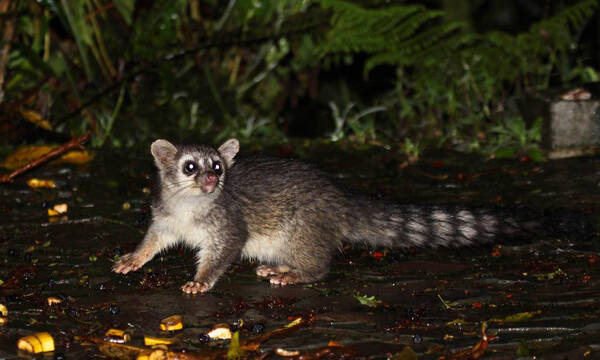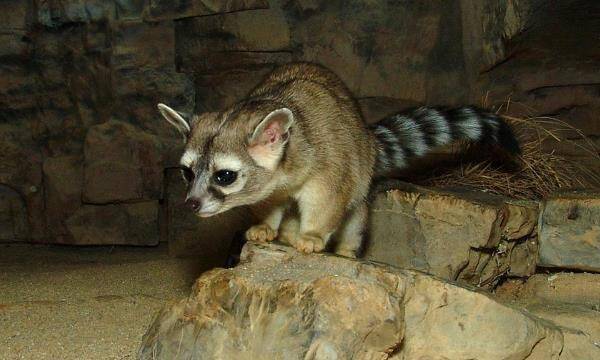Bassariscus sumichrasti
IUCN
LCBasic Information
Scientific classification
- name:Bassariscus sumichrasti
- Scientific Name:Bassariscus sumichrasti,Cacomistle,Sino-American Ring-Tailed Panda
- Outline:Carnivora
- Family:ProcyonidaeProcyonidae Procyoninae
Vital signs
- length:38-47cm
- Weight:1-1.5kg
- lifetime:About 12 years
Feature
The bear's claws cannot be retracted, the color of the tail gradually fades, and the ear outline is sharper.
Distribution and Habitat
The distribution range of the Central American coati: from Guerrero and southern Veracruz in southern Mexico through Central America to Lake Valeno in western Panama.
Main distribution countries and regions: Belize, Costa Rica, El Salvador, Guatemala, Honduras, Mexico, Nicaragua, Panama.
Appearance
The body length is 38-47 cm, males are usually slightly longer than females, and the tail length is similar to the body length, but both sexes have similar weights of 1-1.5 kg. The body is covered with dark brown and gray fur, which contrasts sharply with the black and white striped tail. The tail stripe marks the beginning of its rear end and extends to the solid black tip, where the color of the stripe gradually fades. There are 40 teeth, with the premolars and molars connected to a ridge, and the canines are well developed. The claws are not retractable and the ears are pointed.
Details
The Cacomistle (scientific name: Bassariscus sumichrasti) is similar in appearance to the Cacomistle, which is often confused with the Cacomistle. The main difference between the two is that the Cacomistle's claws cannot be retracted, the color of the tail gradually fades, and the ear outline is sharper.

The Central American raccoon is a nocturnal, arboreal animal that rarely sets foot on the ground. Although small groups of 5-9 individuals have been found gathering in fruit trees, they tend to live alone except during the mating season. Aggression between individuals occurs from time to time. Their activity range can cover 136 hectares without overlapping, and neither sex marks their territory. Individuals communicate with each other through loud roars that can last for hours, and it is believed that such calls are used to mark the boundaries of their respective territories.
The Central American raccoon is an omnivorous animal that prefers fruit foods such as wild figs, papayas and bananas. Other foods include eggs, tree frogs, lizards, insects, birds and mice. Natural enemies include nocturnal birds of prey, ocelots, white-headed ferrets, pythons and humans.

The estrus period of the Central American raccoon can occur at any time and lasts for 44 days. Females usually enter the estrus period from February to June and have only one day of mating. The gestation period is about 63-66 days. After the above process, the cubs are born in a nest on the tree and weigh about 25 grams. The cubs open their eyes after 34 days, eat solid food after 6-7 weeks, forage with the female after two months, and are weaned after three months. Although the female is primarily responsible for caring for the cubs, she can tolerate the presence of the male, allowing him to assist and accompany the cubs in play. Both sexes reach sexual maturity at around 10 months.
The population of the Central American coati is still unknown, and it is difficult to find traces in most areas of its distribution. They may be more common in local areas, such as the remnant forests of Veracruz, but they are very rare in Panama. It is suspected that the Central American coati is quite common in some areas of Belize, El Salvador and Honduras, and some populations are irregularly distributed in Guatemala and Mexico.
Listed in Appendix III of the Convention on International Trade in Endangered Species of Wild Fauna and Flora (CITES).
Listed in the 2012 Red List of Endangered Species of the World Conservation Union (IUCN) ver 3.1 - Least Concern (LC).
Protect wild animals and eliminate game.
Maintaining ecological balance is everyone's responsibility!








